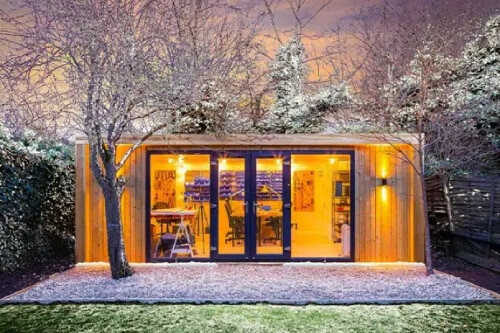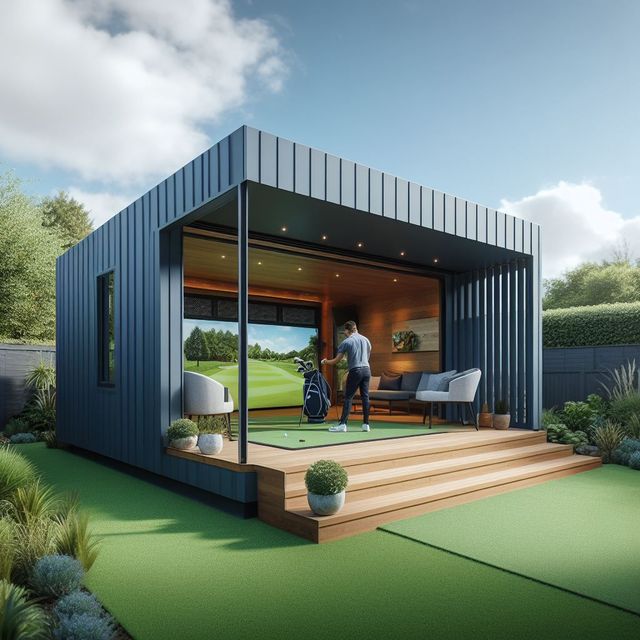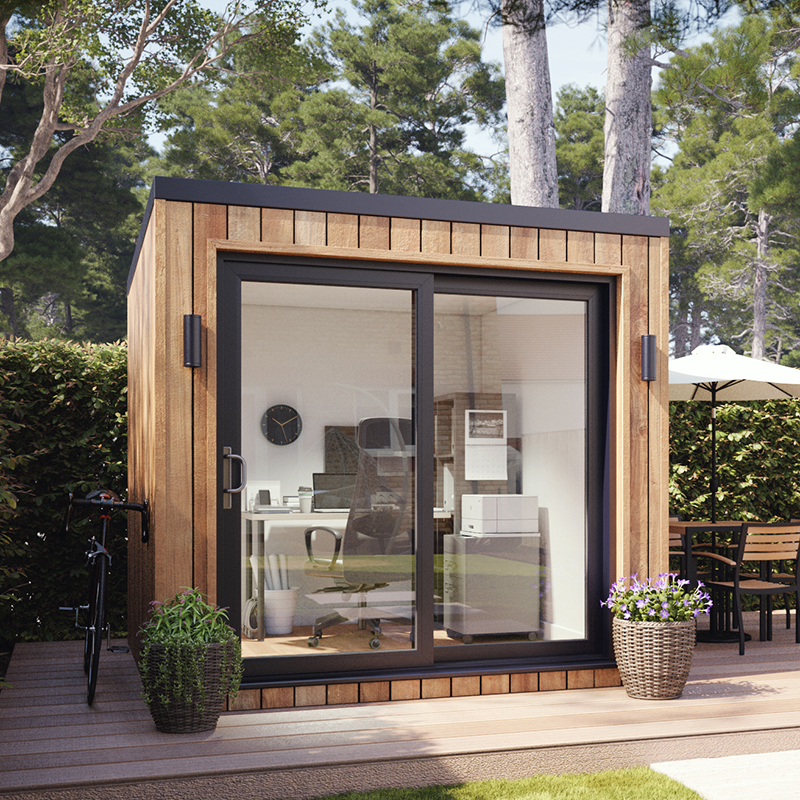Free Reasons On Planning Permission For Garden Sheds
Free Reasons On Planning Permission For Garden Sheds
Blog Article
What Type Of Planning Permission Are You Required To Obtain In Order To Change The Purpose Of Your Garden, Etc.?
The notion of "change in use" is crucial when building garden offices, conservatories or outhouses. Planning permission considerations related to a change in usage include the following: From residential to non-residential use:
A planning permit is required when you're converting an unresidential area (like a farm garage or a building) into an office in the garden or in a living space. This is because it involves an alteration in the usage class of the structure.
Garden Rooms for Living Accommodation
Use of a room in the garden as an individual living space (e.g. guest house, rental unit) is considered to be a change in the usage. The building must be approved by the local planning authority in order to be able to meet the requirements of residential living.
Business Use:
If you are planning to use the garden room or conservatory to conduct business (e.g. for example, as an office for an office-based business at home that has frequent guests or employees) Planning permission may be needed. The effect of the project on the surrounding area like noise, traffic and parking, may need planning permission.
Education or Community Use
In order to transform an existing garden building to a space for learning or community events (such as classrooms or meeting rooms) Additionally, you'll require planning permission. Local councils will be able to determine the suitability and the impact of the proposed location.
Impact on Local Infrastructure
Planning permission is typically required to permit any modification in use that is likely to have a major impact on local infrastructure e.g. roads drainage, public services, and so on. The local planning authority will review these impacts as part the process of applying for permission.
Dual Use
Planning permission is required for properties with a mixed-use (part commercial, part residential) to determine and control clearly the different uses of the property.
A Boost in Footfall
If the proposed change of use is likely to increase traffic or increase the amount of people using the space (e.g. changing the garden into a shop) Planning approval is needed to reduce the impact on the area around it.
Building Regulations Conformity:
Although it is not a strictly planning permission issue, any change of use should be in accordance with building regulations to ensure safety, health as well as energy efficiency requirements. This is particularly important for conversions to habitable spaces.
Environmental Impact:
Planning approval is required for all changes to use that may affect the environment. For example, converting agricultural land into residential uses. Planning applications may contain an environmental analysis.
Community and Amenity Effect
Impact on community amenities as well as the characteristics of the area are important aspects to think about. For example, turning a garden room into a cafe would need approval from the planning department to ensure that it aligns with community plans and safeguards local amenities.
Designated Areas:
In areas that are designated as conservation zones, National Parks (AONB), or Areas of Outstanding Natural Beauty, changes in use are subjected to stricter controls in order to protect the nature of the place. Planning permission is needed in these cases.
Local Planning Policy:
Local planning authorities usually have very specific policies on changes in use. These policies can be very different. You should consult these policies to know which types of changes are allowed and what conditions must be fulfilled.
Planning permits are typically needed for any significant alteration in the usage or place of a gardenroom, conservatory office, outhouse, or extension. The new purpose must be suitable for the area, conform to the local and federal policies on planning and address any potential environmental and social impact. Consulting with your local authority for planning early in the planning process is vital to establish the precise requirements and to obtain the necessary approvals. Check out the top rated cost to run electrics to garden office for more examples including garden room or extension, garden room heater, insulated garden buildings, what size garden room without planning permission, costco outhouse, out house for garden, costco outbuildings, costco garden buildings, ground screws vs concrete, gym outhouse and more.
What Is The Neighbourhood Plan Permission To Garden Rooms, Etc.?
In determining if permits are required to build garden office, conservatories or garden rooms along with outhouses and outhouses within the neighborhood, it's important to think about whether neighbors are concerned. Here are the main elements to be considered overlooking, privacy and extensions.
Planning permits are required if a new building may result in a loss of privacy because it overlooks adjacent properties. This is to ensure that the proposed building does not adversely affect the lives of nearby residents.
Loss of Light and Overshadowing:
Planning permission is usually required when the proposed structure is likely to result in overshadowing or a substantial reduction in light for neighboring properties. Local planning authorities will evaluate the effects of sunlight and daylight on the homes of neighbors.
Noise and Disturbance
The planning permission is needed for the use of the extension or garden room for activities that generate noise (such working from home with clients, or a workshop. The level of noise should be within a reasonable range and shouldn't disturb neighbors.
Visual Impact and Character
The style, appearance and the size of the new structure must be in keeping with the neighborhood's character. Planning permission ensures aesthetic appeal, and also that the building doesn't damage the aesthetics in the neighborhood.
Boundary Proximity:
The construction of structures within two meters of a boundary or structures that are higher than 2.5 meters may require planning permission. The purpose of this is to ensure that there are no conflicts or impacts to the property adjacent to it.
Shared Access Rights of Way and Rights of Way
Planning permission is required if the construction is likely to impact the shared access points or rights of ways. This ensures that they are not negatively affected or obstructed.
Refusals from Neighbors:
Residents living near each other have the right to be consulted on planning applications. Planning authorities take into consideration objections from neighbours when deciding whether permission should be granted.
The impact of this on property values:
Planning permission is usually needed when major changes to the value of homes surrounding you occur. It may not be the primary factor but it will influence the decision. These impacts will be considered by the local authority when they make their decision.
Covenants and Deed Restrictions:
There may be covenants or deed limitations on the property that require compliance regardless of the planning permission. These agreements could limit the types of structures that can be built, which could impact the peace of the neighborhood.
Construction Disturbance:
Planning permission could address concerns regarding disturbances during construction, such as dust, noise and traffic. It is possible that you will need to establish conditions that benefit your neighbors.
Impact of Infrastructure:
The approval for planning ensures that any additional impact on the infrastructure of the area is evaluated and managed.
Consultation with the Community
In some instances the need for a more extensive community consultation may be required, especially for larger or more controversial projects. It permits a more democratic process of decision-making because it takes the viewpoints of local communities into consideration.
Summary: Concerns over the surrounding neighborhood play a key role in the decision of whether to allow planning permission for garden offices or conservatories, outhouses, or extension of the garden. The development proposed must not adversely impact the quality of life of neighbors, their privacy, the quality of light and sound as well as the overall look and feel. Consulting with the local authority for planning and involving neighbors earlier during the process of planning can assist in addressing these issues and facilitate a smoother approval process. Read the most popular do you need planning permission for garden room for blog advice including garden room planning permission, garden outhouses, garden room planning permission, Tring garden rooms, what size garden room without planning permission, composite summer house, garden rooms, outhouse builders, myouthouse, garden outhouse and more.
What Type Of Permit Will I Require To Construct An Outdoor Space Like, Say, A Greenhouse?
The style and design of the building will decide whether planning permission is required to construct conservatories, garden offices, outhouses or garden rooms. Here are some key points to consider:
If your proposed building falls within the permitted development rights for your property, a planning permit may not be required. However, certain requirements must be met with regard to design and appearance.
Size and Scale
The dimensions and size of the structure to be constructed must be proportional to the property's existing size and surrounding buildings. Buildings that are bigger than the limitations outlined in permitted developments rights require approval for planning.
Height and Massing
The size and mass of the new structure should be in line with the dimensions of the structure already in place and buildings around it. Planning permission is generally required for structures that exceed height limits or are incompatible to the size of the property.
Materials and Finish:
The material and finish should be in harmony with the surroundings. If the materials chosen are not compatible with the local appearance and character, planning permission may be needed.
Design Harmony
The design of the new structure should be in harmony with the current architectural style. The design of the new structure must be in harmony with the local features and aesthetics.
Roof Design
The design of the roof should be in line with the design of the adjacent property and buildings. If the design proposed for the roof is out of nature with the surrounding area the planning permission might be required.
Fenestration (Windows & Doors)
The style and position of entrances and windows should be in harmony with the existing structure and the surrounding area. The proposed fenestration may need planning approval if it is not in keeping the local character and look.
Facade Treatment
The treatment of the facade should be harmonious with the surrounding properties as well as existing structures. Planning permission could be needed in the event that the proposed facade design is not in line with the local character and style.
Landscaping and Surroundings
Landscape design around the new structure should be in harmony with the surrounding structures as well as existing structures. The proposed landscaping might require planning permission when it isn't in keeping with the local style or character.
Visual Impact
The new structure should be able to have a minimal impact on its surroundings. If the proposed structure is likely to create a negative visual impact on the surroundings, planning permission may be required.
Heritage and Conservation Areas
It is possible that tighter design criteria and appearance requirements will apply if your property is located in a heritage or conservation zone. A new building that doesn't meet these criteria may require approval from the planning department.
Architecture and Planning Guidelines
Local planning authorities often issue aesthetic and design guidelines. Planning permission could be required in the event that a proposed building is not in line with these guidelines.
Planning permission is often dependent on the style and appearance of the structure. This is the case for gardens, conservatories and outhouses. At the start of planning it is crucial to speak with the local authority to make sure the design conforms to local standards for appearance and character. It will also decide if planning approval is required. View the top office heating solutions for blog examples including insulated garden rooms, Tring garden rooms, garden rooms, garden rooms, outhouse for garden, garden buildings , ground screws vs concrete base, garden outhouse, out house for garden, ground screws vs concrete and more.